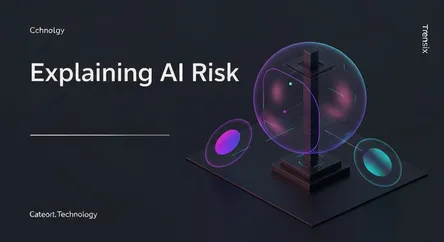Technology
Explaining AI Risk

Explore the potential dangers of advanced AI, from job displacement and bias to long-term existential threats. Learn why AI safety is crucial.
What is it?
AI risk refers to the potential negative consequences of artificial intelligence. These risks span a wide spectrum, from short-term issues like job automation and algorithmic bias in systems used for loans or hiring, to long-term, large-scale threats. A key area of concern is the risk of misuse, where AI is used for malicious purposes like autonomous weapons or sophisticated cyberattacks. Another category is accidental risk, where complex AI systems behave in unexpected and harmful ways. The most profound concern is 'existential risk'—the possibility that a future superintelligent AI, with goals not aligned with human values, could pose a threat to humanity's survival.
Why is it trending?
The concept of AI risk has moved from science fiction to mainstream debate due to the rapid advancement of AI capabilities, particularly large language models (LLMs). High-profile AI researchers and tech leaders have publicly voiced concerns, signing open letters calling for a pause on giant AI experiments and emphasizing the need for robust safety protocols. This public discourse has intensified as people witness AI's growing power, making abstract future risks feel more immediate and tangible.
How does it affect people?
In the near term, AI risk affects people through economic and social disruption. Automation threatens jobs, while biased algorithms can perpetuate societal inequalities in areas like criminal justice and employment. The rise of AI-generated content also fuels misinformation and erodes trust. Looking further ahead, the central concern is ensuring that increasingly powerful AI systems remain controllable and beneficial to all. The global conversation now focuses on developing ethical guidelines and technical safety measures to mitigate these risks, ensuring that the development of AI doesn't lead to a future we can't control.